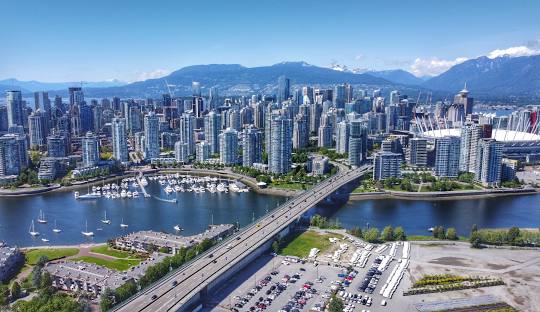
Nature in the City: Vancouver’s Stunning Geography and Lush Ecological Legacy
Posted by on
Vancouver’s geographical setting and ecological heritage make it one of the most visually stunning and environmentally diverse cities in North America. Situated on the Burrard Peninsula, the city is surrounded by major natural features: Burrard Inlet to the north, the Fraser River to the south, and the Strait of Georgia to the west, with Vancouver Island shielding it from the open Pacific Ocean.
Covering an area of 115.18 square kilometers (44.47 square miles), Vancouver includes a mix of flat lowlands and rolling hills, all within the Pacific Time Zone (UTC−8) and located in the Pacific Maritime Ecozone. Despite a common misconception, the city is not located on Vancouver Island—a distinction that predates the city's naming in 1885. Both the city and the island are named after Captain George Vancouver of the Royal Navy, whose explorations helped chart the region’s coastlines.
Vancouver is also home to Stanley Park, one of the largest urban parks in North America, spanning 404.9 hectares (1,001 acres). Framing the city’s skyline are the North Shore Mountains, and on clear days, residents and visitors can enjoy breathtaking vistas of Mount Baker, the Vancouver Island ranges, Bowen Island, and the sparkling waters of English Bay and Burrard Inlet.
From an ecological standpoint, Vancouver was originally a lush temperate rainforest, dominated by towering conifers such as Douglas fir, western red cedar, and western hemlock, with scattered maple and alder groves. Poor drainage created swamplands even on higher terrain. Some of the largest trees on the BC coast once stood in areas like Gastown, False Creek, and Jericho Beach. Stanley Park’s forest, although logged in the late 19th century, still bears evidence of historic logging methods, including springboard notches carved into old stumps.
Today, the city’s green landscape is a blend of native and imported plant species. Trees and flowering plants from Asia, Eastern Canada, and Europe now thrive in Vancouver’s temperate climate. Notable examples include the monkey puzzle tree, Japanese maple, magnolia, azalea, and rhododendron. Streets across the city burst into color each spring thanks to thousands of Japanese cherry trees, originally donated by Japan’s government in the 1930s. Their annual bloom is celebrated with the Vancouver Cherry Blossom Festival, a cherished cultural tradition.
Vancouver’s harmonious relationship between urban development and natural environment has created a cityscape where nature is always close at hand—whether in the towering trees of Stanley Park, the snowy peaks of the North Shore, or the flowering streetscapes that usher in each new spring.